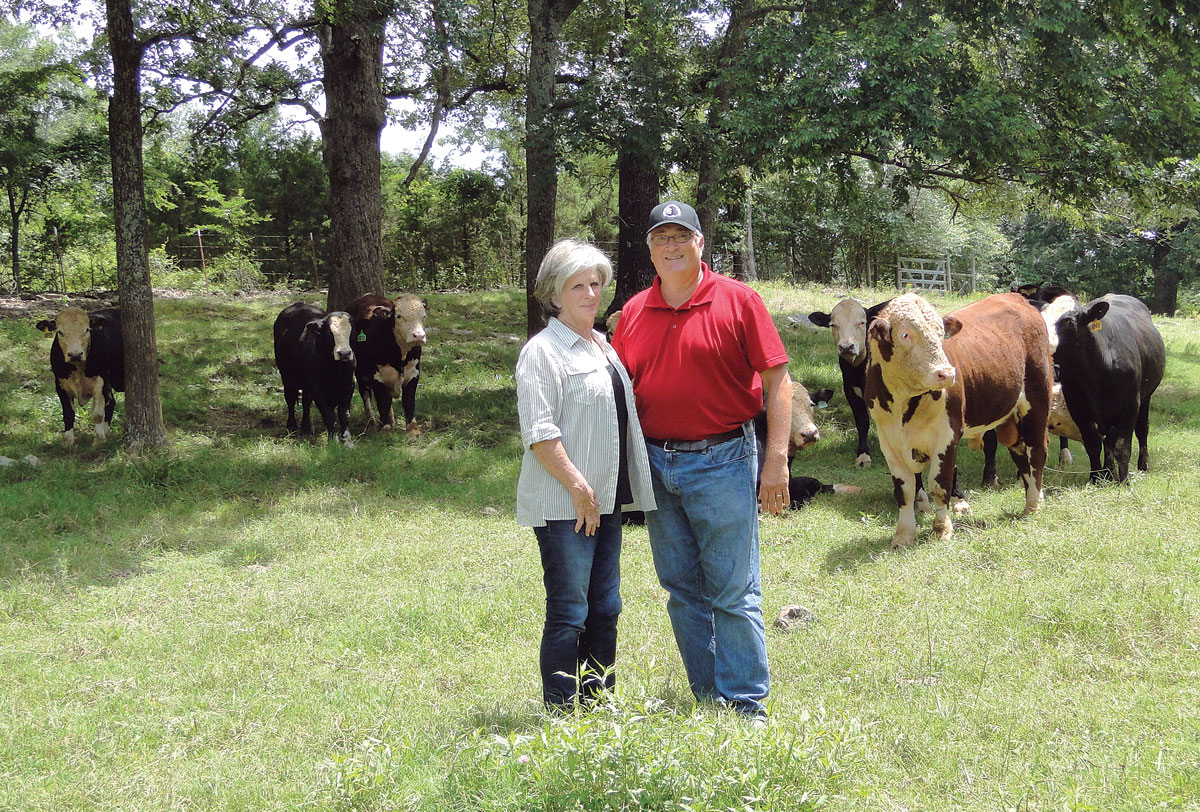
Many years ago, historians who know about such things suggest that red cattle were brought to Great Britain by both the Romans and the Vikings. Fast forward to the early 1800s. John Reeve, a tenet on the Earl of Leicester’s Holkham Estate in Norfolk, crossed horned Norfolk red beef cattle with the Suffolk dun, a polled dairy cow. Reeve’s cattle became known as Red Polled cattle. The cattle were recognized as a separate breed in 1846 and in 1873 were first imported to the United States.
The Red Poll breed is one of the oldest registered breeds in the United States. Today, most of the population of Red Poll cattle is centered in the Midwest. But the breed is gaining popularity both as a heritage breed and as a breed that can produce choice quality carcasses on grass only. In Arkansas there are 15 farms that run registered Red Poll cattle. One of those is Fairchild Farms, owned by Brian and Nicole Fairchild of Everton, Ark.
Three and a half years ago Brian and Nicole, along with their two children Winston and Lillian, relocated from Springfield, Mo. Brian works full time on the Boone County farm, but is also a substitute teacher and a woodworker. There was a time when Brian was headed for the ministry as an Air Force chaplain. However, with the changing economy and other circumstances beyond his control, he shifted gears and is currently a children’s pastor at a local Harrison church. Nicole works off the farm as a school counselor in nearby Jasper.
The Fairchilds own about 5 acres of land and lease 90 in various locations in the area. Brian uses rotational grazing but said, “It can be a workout but it is the best use of the land.” Some of the cattle are as close as his own front pasture, but others are as far away as Berryville, where his dad watches over them. It’s a lot of work taking care of cattle in so many different places. Brian said, “I haul a lot of water. A lot of pieces that I find available don’t have a pond. So there are a lot of times that I haul water to the cattle.”
Brian isn’t in this business on his own. His brother, Greg, partners with him on some of the cattle. They were first attracted to the Red Poll breed because they wanted something other than black, that would milk well, be good mothers and would be a more marketable product. After much research, they decided on the Red Poll breed.
Brian added that the Red Poll breed is also gene-resistant to salmonella. Along with hybrid vigor, the momma cows have such high maternal traits that they’ll even claim each other’s calves. Also, their milk is high in butter fat, which helps the calves to grow quickly. Brian added that the Red Polls are the most docile cattle he’s ever seen. They don’t get worked up, they don’t bust their fences. Brian said, “They don’t run around acting stupid and losing weight.”
Unfortunately they’re currently limited by the amount of land that’s available to them. In the future, they’d like to lease enough land to run between 75 and 100 head.
It isn’t necessary to sell the Red Polls at a local sale barn. The Fairchild cattle are sold directly off the farm. Even though they have people waiting to buy the Red Polls for breeding, he won’t sell inferior cattle. If one doesn’t meet his standards, he won’t sell them as registered stock. He will grow them out as meat for individuals. “We make way more money that way than going to the sale barn,” Brian said.
He continued, “Within 50 miles I know of four farms that are using Red Poll bulls on their commercial cows. There’s a market for the bulls. The only problem is that with the bull market, you have to keep them for about 16 to 18 months. The heifers sell fast and at a young age – once they’re bred, they’re already sold.” Customers agree to buy them in September for March pickup.
In addition to the cattle, they also raise Duroc pigs for meat. He currently has 12: two sows and 10 for meat. He said, “It provides another revenue source.”
Fairchild loves the farm life and the work that goes with it. He hopes to be able to acquire more land so that he can expand and develop the herd.







